-
Giotto del Bondone 1266 - 1337
Florentine painter and architect. Outstanding as a painter, sculptor, and architect, Giotto was recognized as the first genius of art in the Italian Renaissance. Giotto lived and worked at a time when people's minds and talents were first being freed from the shackles of medieval restraint. He dealt largely in the traditional religious subjects, but he gave these subjects an earthly, full-blooded life and force.
The artist's full name was Giotto di Bondone. He was born about 1266 in the village of Vespignano, near Florence. His father was a small landed farmer. Giorgio Vasari, one of Giotto's first biographers, tells how Cimabue, a well-known Florentine painter, discovered Giotto's talents. Cimabue supposedly saw the 12-year-old boy sketching one of his father's sheep on a flat rock and was so impressed with his talent that he persuaded the father to let Giotto become his pupil. Another story is that Giotto, while apprenticed to a wool merchant in Florence, frequented Cimabue's studio so much that he was finally allowed to study painting.
The earliest work attributed to Giotto is a series of frescoes on the life of St Francis in the church at Assisi. In about 1305 and 1306 Giotto painted the extraordinary series of frescoes in the Arena Chapel in Padua.
In common with other artists of his day, Giotto lacked the technical knowledge of anatomy and perspective that later painters learned. Yet what he possessed was infinitely greater than the technical skill of the artists who followed him. He had a grasp of human emotion and of what was significant in human life. In concentrating on these essentials he created compelling pictures of people under stress, of people caught up in crises and soul-searching decisions. Modern artists often seek inspiration from Giotto. In him they find a direct approach to human experience that remains valid for every age.
Giotto is regarded as the founder of the central tradition of Western painting because his work broke free from the stylizations of Byzantine art, introducing new ideals of naturalism and creating a convincing sense of pictorial space. His momentous achievement was recognized by his contemporaries (Dante praised him in a famous passage of The Divine Comedy, where he said he had surpassed his master Cimabue), and in about 1400 Cennino Cennini wrote 'Giotto translated the art of painting from Greek to Latin.
During an excavation in the 1970s bones were discovered beneath the paving of Santa Reparata (below Duomo, Florence) at a spot close to the location given by Vasari (for Giotto's grave), but unmarked on either level. Forensic examination of the bones by anthopologist Francesco Mallegni in 2000 seemed to confirm that they were those of a painter, particularly the range of chemicals, including arsenic and lead, both commonly found in paint, that the bones had absorbed.
Forensic reconstruction showed a short man with a very large head, a large hooked nose and one eye more prominent than the other. The bones of the neck indicated that the man spent a lot of time with his head tilted backwards. The front teeth were worn in a way consistent with frequently holding a brush between the teeth. The man was about 70 at the time of death.
Vasari says of Giotto that "there was no uglier man in the city of Florence" and indicates that his children were also plain in appearance. There is a story that Dante visited Giotto while he was painting the Arena Chapel and, seeing the artist's children underfoot asked how a man who painted such beautiful pictures could create such plain children, to which Giotto, who according to Vasari was always a wit, replied "I made them in the dark."
Giotto's frecoes in the Upper Church of Assisi describing the Life of S. Francis 1297-1300

View of the Upper Church

New Testament Lamentation 1290s
At this time the young Giotto was clearly influenced in his choice of colors and layout by Cimabue's frescoes (1286) in S. Francesco. However, closer examination shows that Giotto had a deeper concern for the emotional relationships between his figures than his teacher: e.g., the exchange looks between the womne full of surprise and grief. During the following years Giotto developed his very own signature seen in the following frescoes.:
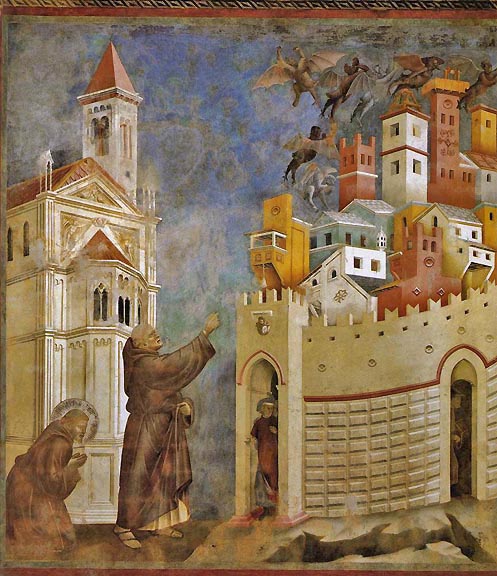
Exorcism 1297-99
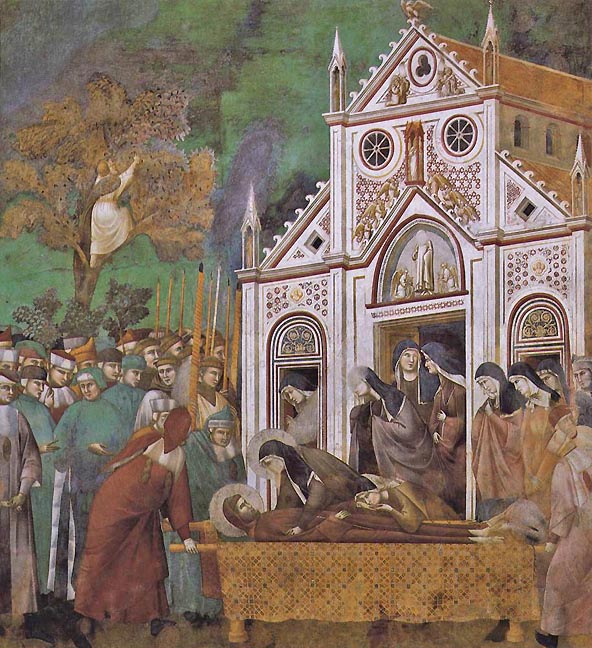
Santa Clara at the death of St. Francis 1300
Giotto's frescoes in the Lower Church: Scenes from the New Testament and Life of St. Magdalene 1320s
Between Giotto's frescoes in the Upper and those in the Lower Church 20 years had passed. During this time he had painted the frescoes in the Cappella degli Scrovegni in Padua (1308). By the time he returned to Assisi he had developed his own chararacteristic style much admired by his contemporaries.
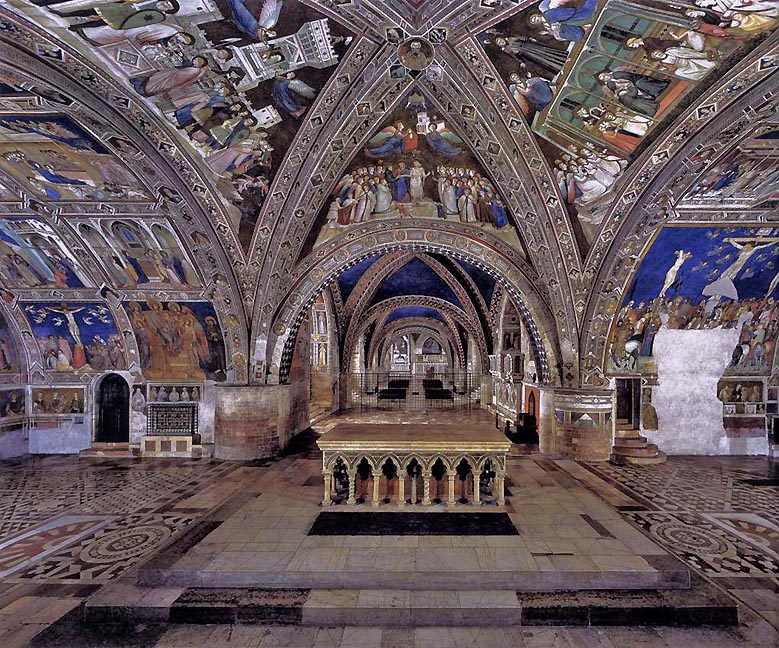
View of Lower Church
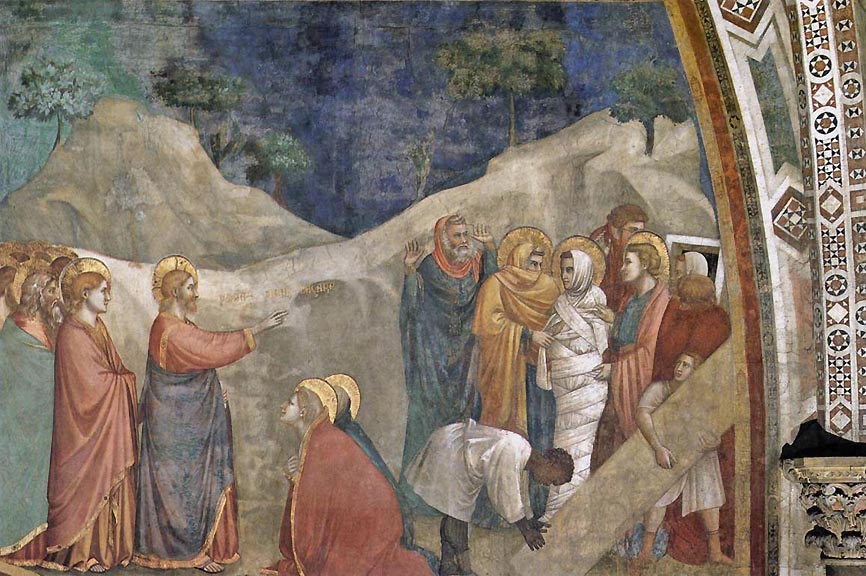
Raising of Lazarus 1320s
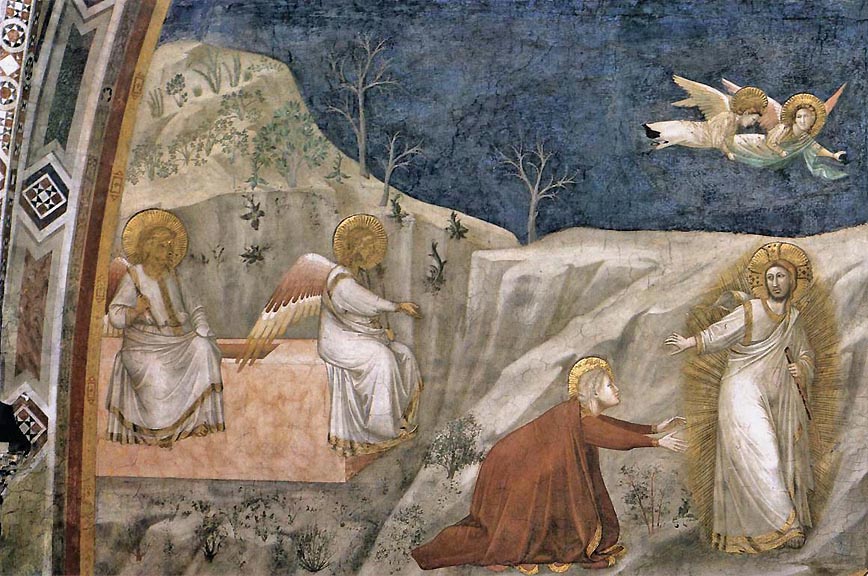
Noli me tangere 1320s
Giotto's frescoes in Santa Croce, Florence 1320
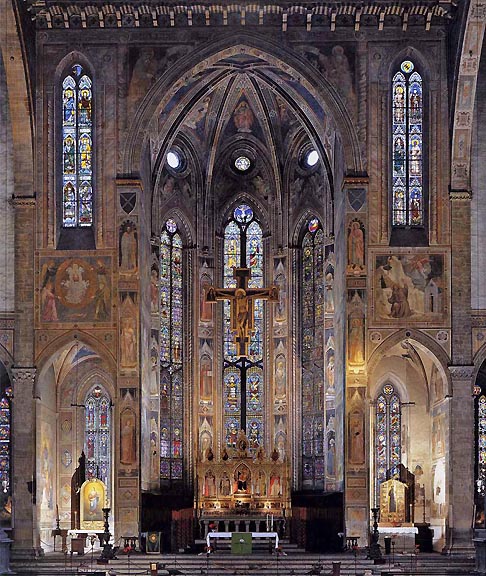
View of Santa Croce, Florence
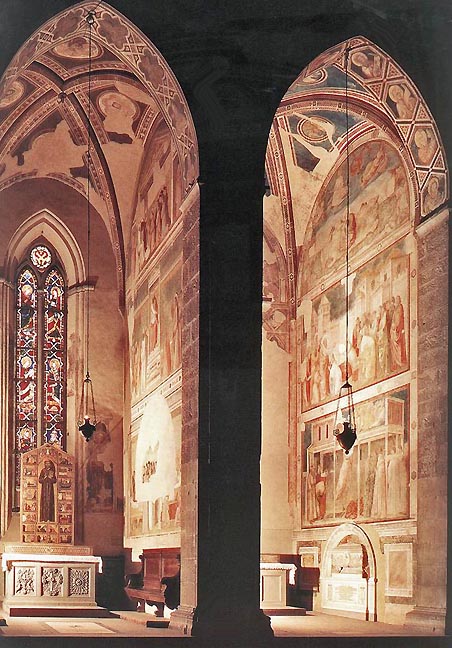
Giotto's frescoes in the Bardi Chapel in Santa Croce